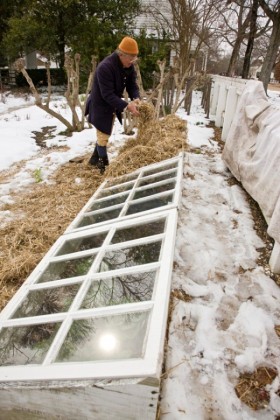We have spoken over the past several weeks of kales, coleworts and endives, but I fear we would be remiss if we did not also consider that most tender member of the sallet tribe, the lettuce.
It is, without a doubt, the most indispensable of all the greens for as Mr. Stephen Switzer observed in The Practical Kitchen Gardener (1727), “It ever was, and still continues to be the principal foundation of the universal tribe of sallets.” It is a distinction it holds to this very day.
There are many varieties of this excellent esculent to choose from, but one of my favorites is the Brown Dutch first mentioned by Richard Bradley in New Improvements (1726) who observed, “it will be curl’d in its Leaves, by the Time October is over, will mix very well with the small Salad Herbs in the Winter.” All authors agree that it is one of the most agreeable of the lettuce varieties grown during the winter months.
Brown Dutch forms a small, loose head with attractive purple-brown leaf colorings that can range from a blush on the margins of the leaf to coloring the entire leaf.
Another very hardy winter lettuce is known as Aleppo. This purple spotted lettuce was named for the Syrian city from whence it arose. Amelia Simmons writes of it in American Cookery (1796); “the purple spotted leaf is generally the tenderest, and free from bitter.”
In Williamsburg, Mr. Randolph has an entirely different opinion for he writes, “it did not please me so well as the other more common sorts.” Aleppo is an open headed variety, akin to the cos lettuce, often only lightly spotted and is greatly improved by frosty weather.
Unlike the hardier greens, lettuce must be grown in frames over the winter months and as an additional precaution in severe weather the sashes are covered with straw and a canvas laid over all.




Leave a Reply